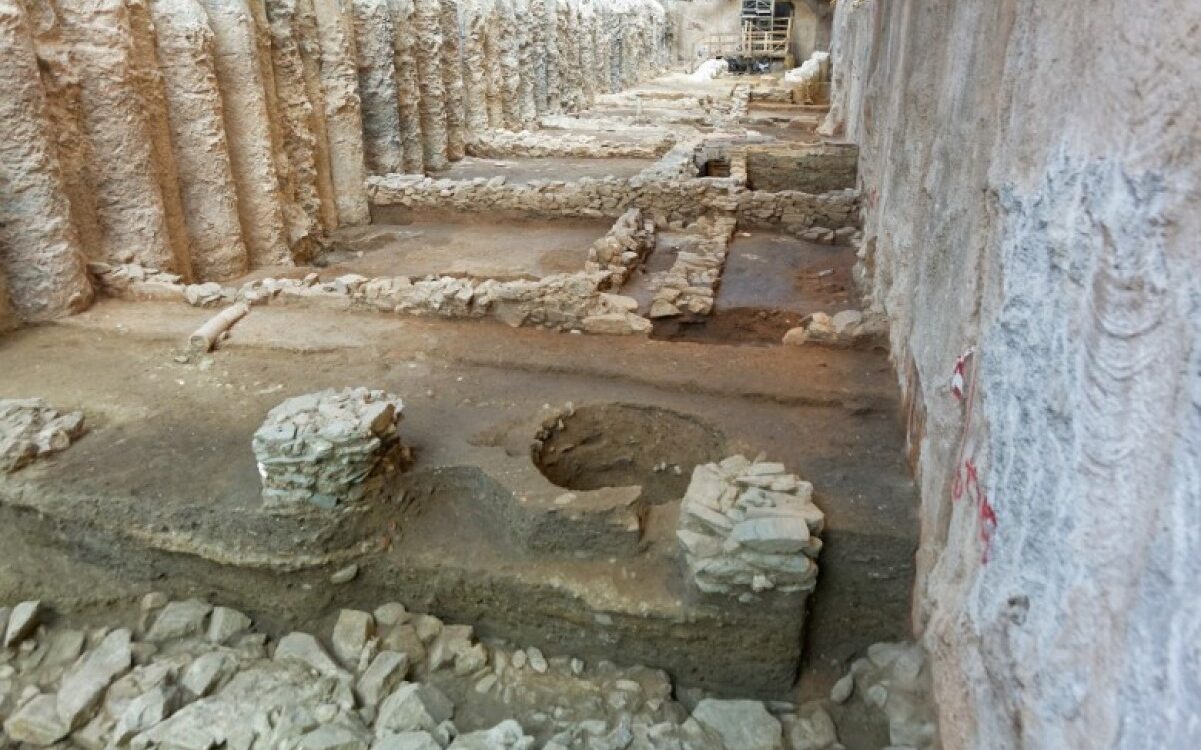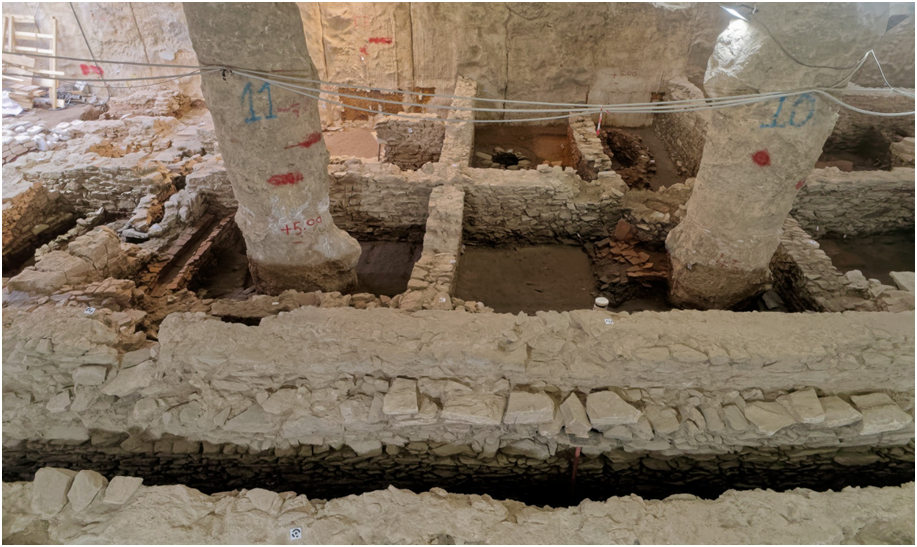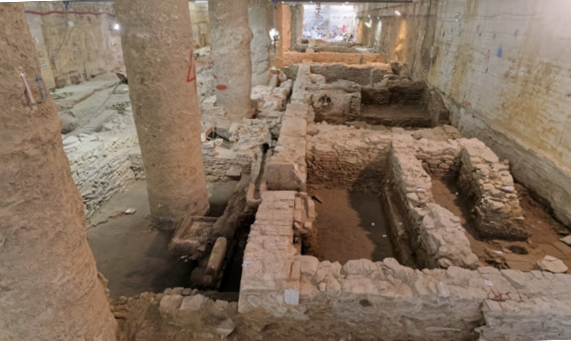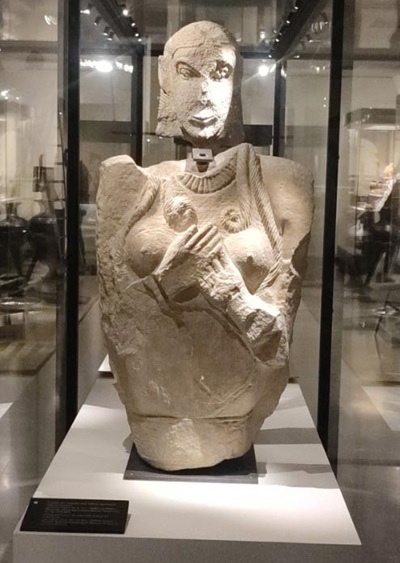
Removal and repositioning of the archaeological findings,
revealed during the second phase of the excavations
at the Venizelos Station of Thessaloniki’s Metro.
The Central Archaeological Council, according to the joint recommendation of the
the four Directorates (DIPKA, DBMA, DAM, DABMM) and the Ephorate
of Antiquities of the city of Thessaloniki has unanimously advised in favour of the temporary
and repositioning of the ancient remains, which were discovered
within the shell of the Venizelos station during the second phase of the excavation
investigation, and placed between the late 3rd and 6th century AD. The investigation
was carried out after the temporary detachment of the overlying antiquities.
The main concern was the attempt to restore the underlying antiquities,
which will either underlie the antiquities that have already been detached,
or will emerge, as appropriate, under them, ensuring the preservation of the
testimony of the urban organization and the overlapping of the building phases of the urban planning system
and the use of the area, the city’s urban fabric, its history and elements of its timelessness,
the integrity of the underlying phases as far as possible, as well as the didactic projection and their exposure,
which would not otherwise be visible.
Specifically, the KAS gave a positive opinion in favour of the temporary detachment and repositioning of the construction phases of the SE island of the late antiquety
which form an integral whole with the already detached antiquities, as well as in favour of the temporary detachment and repositioning of the infrastructure network of the main roads or parts of the these, which were revealed during the second phase of the excavation, taking into account the inelastic limit of the station plate. The antiquities during their reinsertion into the shell of the Venizelos Station are included to be repositioned in the monumental set .
The Council also advised in favor of detaching a wall and its underlying and its superimposed substrates, in order to be exhibited as a stratigraphy specimen for laboratory use within Venizelos Station. At the same time, in favour of the investigation by excavation of parts of small tanks, fragmentarily preserved, and sections of built-up pipelines,
in order to continue the archaeological investigation of the underlying anthropogenic deposits. Finally, the Council requested, at its next meeting, to come up with a study for the extraction and repositioning of the above-mentioned antiquities,
as well as the exhaustion of the excavation investigation by the end of the anthropogenic excavations.

As stated by the Minister of Culture and Sports Lina Mendoni, “the appropriate
services of the Ministry of Culture and Sports are working with great dedication and extremely intensive rhythms, adhering to the timetables and
with absolute respect to archaeological legislation and international conventions for
protection, preservation of authenticity and promotion of the
antiquities uncovered at Venizelos Station. This is presumed and
by the decisions of the courts, which justify the choices made by the Ministry of Culture. The opinion of the Central Archaeological Council ensures and
and protects the archaeological remains, which were discovered after the
the removal of the overlying layers, including the decumanus maximus.
successive opinions, the Central Archaeological Council allows the
and repositioning of 92 % of the antiquities in the
the same location, which were revealed, within the Venizelos Station, while with the recent opinion makes it possible to reintroduce the underlying
antiquities, which constitute a single set with the already detached,
completing the image of the urban fabric of the city at the intersection of the
decumanus with the cardo and demonstrating the sequence of the residential
phases. The Metropolitan Railway will be built within the
the timetable already set, serving thousands of people every day in
Thessaloniki, while it will have a unique aesthetic station, not
not only for the Greek standards , but for the international
as well”.
The General Secretary of Culture George Didaskalou made the following statement: “With today’s unanimous opinion of the KAS we continue to defend the public interest. The posting and reassignment of the
antiquities uncovered after the end of the excavation, or their exposure to other suitable sites, ensures both the preservation and
promotion of the monumental ensemble and the construction of the Venizelos Metro station”.
During the B’ phase of the excavation investigation, which took place at
the same period as the temporary detachment of the antiquities, was excavated,
uniformly, the entire surface of the pit (1260sq.m.) up to the altitude +3,50m.
The new findings uncovered span a time horizon from the
3rd to 5th/6th century AD. A.D., while earlier remains can just be discerned, the excavation of which will be completed with the continuation of deeper research, in
in the next phase.

The newly revealed architectural remains relate to a network of infrastructure
under the decks of the two main roads -decumanus maximus and
cardo at the height of the current Venizelos Street – as well as in a dense network of
with consecutive phases of the first building island south-east of the intersection of the
road junction.
The excavation yielded numerous movable finds, numerous coins,
abundant pottery of Late Roman (3rd) and Late Antiquity (4th-
6th), glass, marble, iron, bronze and bone finds, the conservation of the
The preservation and recording of which is proceeding in parallel with the excavation research.








Leave A Comment